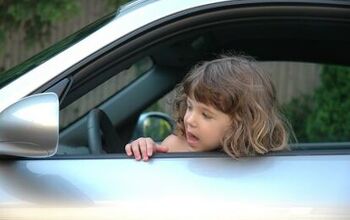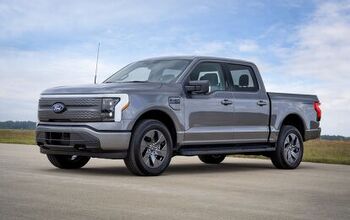Back to the Future
The automotive world has gone mad. Horsepower mad. Fifteen years ago, a car with 200 horsepower was knocking on supercar territory. These days, no Japanese tuned compact would dare show its face at a street meet without 200hp under the hood. Ford's new Mustang GT is propelled by a 300hp V8. Pontiac's latest GTO makes 400hp. Dodge's Viper boasts 500hp. It's all very impressive– until you get in to one of these cars and drive.
Like straight lines? Then big horsepower cars are your dream come true. With traction control and grippy tires, just plant your right foot and hold on. When I was young, a car that could hit 60 miles per hour in under eight seconds was lightning quick. Nowadays, a car that can't hit 60 from zero in eight seconds is considered ridiculously slow, and five second times are common.
For what I call a proper driver, straight line acceleration is only a means to an end; it's something you do between corners. Cornering quickly requires skill, bravery, experience and an intimate relationship with your car. It depends on an ever-changing set of variables. It is, in short, the most fun you can have in a car. So what's holding these hugely horsed cars back?
Weight. I know safety requires more steel, and marketing loves all the do-dads, but do "sports cars" really need to weigh over two tons? Consider the much admired Mercedes SL55 AMG. The two-seater has 493hp and 415ft.-lbs. of torque. It also weighs a whopping 4,235 pounds. That's only a couple of hundred pounds less than a BMW X5. Yes, the SL55 AMG will go like stink down the straights. But simple physics says it's not going to be nimble through the turns– no matter how much electronic trickery Mercedes throws at the problem of mass vs. lateral acceleration.
For me, the ideal car is not big and powerful. It's light and nimble. Mazda gets it right. Fifteen years after its launch, their 2500 pound Miata still delights, with 'only' 142hp under the hood. But if you want to sample the perfect driver's car, one that combines gorgeous looks with exquisite balance and more than merely adequate power, travel back some 30 years and consider the Ferrari Dino 246GT.
The Dino has a 2.4-liter six, 195 horsepower and 165ft.-lbs. of torque. It weighs 2800 lbs. dripping wet. In 1972, the Dino cost about $14,000; a tidy sum, but not a pocketbook killer ($60,000 in today's money). Enzo Ferrari produced the car to launch an ill-fated Ferrari sub-brand (technically, it's a Dino, not a Ferrari) and compete with Porsche's lower-priced product. Never a big race track performer, the Dino still out-handled and out-looked the street Porsches of the time. Only in straight line acceleration did the 911 have a small advantage.
Today, the Dino still drives like a dream, handles like a go-cart, and has enough acceleration to make it an amusing car. Zero to 60 in seven seconds may not seem like much, but in a car that will out handle many modern era performance cars, it's plenty quick. More importantly, the Dino is far more fun to drive around corners than just about any modern 300hp-plus 'supercar'. It simply doesn't need any more horsepower.
A recent weekend drive on some very twisty country roads proved that the Dino can keep up with its modern Ferrari compatriots: a Ferrari 550, 360 and 328. While they all could leave the Dino in the dust on the straights, I more that kept pace with them through the curves. Again, modern horsepower can't overcome physics. Heavy cars are more work to push through turns, and no amount of horsepower is going to completely overcome the forces of nature. Oh, and all of this on very un-sports car-like 205/70-14 tires. Try that on your $100,000 exotic.
Compared to my '04 BMW M3 with SMG II, the Dino shows it age. But it also shows its skills. The Ferrari is more enjoyable at the limit than the BMW. And its limits are lower, making them more attainable. What good is rocket-like 0-100 acceleration in most street applications? It's more pleasurable to push a car hard through the turns and know exactly what it's going to do than to drag race down Interstate 95, waiting for the Pennsylvania State Police to write you a big bucks ticket.
Enzo Ferrari got it right with the Dino. Take a small, lightweight car; put it close to the ground (a mere 5'), and then give it a reasonably vigorous engine and a well-balanced, user-friendly chassis. If today's manufacturers want to create more successful sports cars like the Miata, they have to forget their power-crazed ways and go back to the future. They need to drive a Dino.
More by Dave Matthias
Latest Car Reviews
Read moreLatest Product Reviews
Read moreRecent Comments
- Wjtinfwb My local Ford dealer would be better served if the entire facility was AI. At least AI won't be openly hostile and confrontational to your basic requests when making or servicing you 50k plus investment and maybe would return a phone call or two.
- Ras815 Tesla is going to make for one of those fantastic corporate case studies someday. They had it all, and all it took was an increasingly erratic CEO empowered to make a few terrible, unchallenged ideas to wreck it.
- Dave Holzman Golden2husky remember you from well over decade ago in these comments. If I wanted to have a screen name that reflected my canine companionship, I'd be BorderCollie as of about five years go. Life is definitely better with dogs.
- Dave Holzman You're right about that!
- EBFlex It will have exactly zero effect





































Comments
Join the conversation